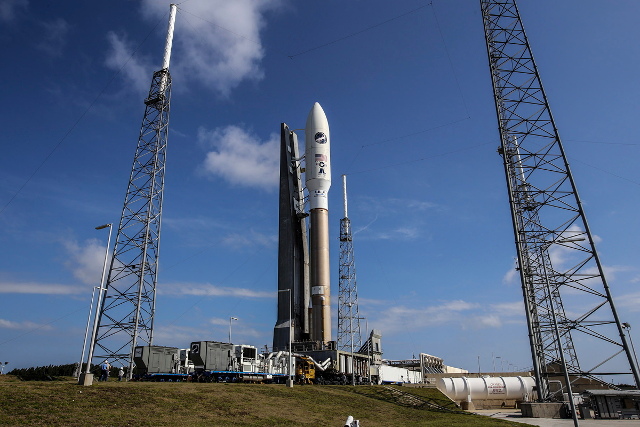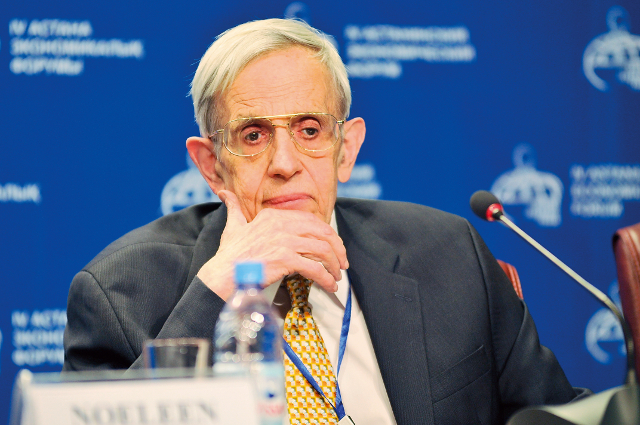
Two-For-One
On Wednesday, space news fans got a two-for-one event: the ULA Atlas V carrying the “top secret space plane” X-37b into orbit also brought along the Planetary Society’s Lightsail-1 on its way to LEO. This is the X-37b’s fourth flight, during which it will be testing some new “Hall thrusters,” a kind of ion engine similar to the one on the Dawn spacecraft. They don’t pack much of a punch, but they can fire for years if you need them to. The USAF says it’s for use in their next generation of communications satellites, and it probably is. But let’s be honest — you and I both think that they’re going to be doing more up there than that. We just don’t get to know about the rest of it. What we do get to know about is the citizen-science project that is the Lightsail-1. I’ve written about it before, but here’s the basic rundown: the Planetary Society has launched a cubesat called Lightsail-1, which, when its mylar sail unfurls on June 17, will set about testing the use of solar radiation pressure as a means of locomotion. It should be visible from the surface of the Earth at that point, and you can take a look at their Mission Control Center online to see where it is in relation to you in case you want to look. Meanwhile they’ve already (as of today) raised nearly four times their initial goal of $200,000 to fund the next Lightsail mission on KickStarter. Read more about the X37-b on this handy inforgraphic at the National Post, and more about Lightsail-1 at the Planetary Society and on their blog.

Ireland Says “Yes”
More than a million people turned out in Ireland this week to vote on a constitutional amendment that brings their country’s definition of marriage into line with their beliefs: that marriage is between two people, regardless of their gender or sex. In doing so, they’ve not only become the first country to legalize same-sex marriage by popular vote, they’ve also leapfrogged over all the bickering and expensive legal battles still plaguing the legalization process in the United States. It has been nearly twelve years since the landmark “Goodridge v. Department of Public Health” court ruling in Massachusetts determined it could not legally deny civil unions to same-sex couples, but even now thirteen states and five territories have legislation on the books that explicitly bans same-sex marriage, and a major Supreme Court ruling is still in the works. But with one vote, Ireland has extended all the rights and privileges of marriage to same-sex couples. As I wrote in my brief response earlier this week, Ireland has rewritten the source code for their country, and with it changed everything subsequent — including adoption, death benefits, and more. Family is simply family. Even the Catholic Church has seemed to admit defeat in the matter, though who’s going to have to change is still ambiguous in the phrase “there’s a big challenge there to see how we get across the message of the church [to the younger generation].” The wheels of progress move in fits and starts, and this was a good week for it. The Guardian has more on the story, and what it may mean for Northern Ireland, the lone holdout in western Europe.
“John Forbes Nash, Jr.” by Economicforum – Own work. Licensed under CC BY-SA 3.0 via Wikimedia Commons.
John Forbes Nash, Jr.
Yesterday, John Forbes Nash, Jr. and his wife Alicia died in a car crash. You may not recognize his name at first, but if you saw the movie A Beautiful Mind, you’ll know at least some of his story. Despite his struggles with mental illness — he was diagnosed as suffering from paranoid schizophrenia in 1959 — he won numerous prizes for his contributions to a field of study known variously as “game theory” and “interactive decision theory.” He won the Nobel Prize for Economics in 1994 for his discovery of equilibrium states where, if both parties involved know the options available to the other, their decisions can become, in a sense, “stuck.” One good example is the so-called “Mutual Assured Destruction” from the Cold War, in which both sides were held back from firing their nuclear weapons by the knowledge that doing so would force the other to do the same. Slate has a good explanation of the importance of the Nash equilibrium, and the New York Times has an excellent obituary.
Bionic Limbs
There were two stories that hit my news feed this week about artificial limbs controlled by the user’s mind: one about arms and one about legs. Over at Gizmodo is the story of Les Baugh, a man testing out a pair of robotic arms made by the Johns Hopkins Applied Physics Lab. He’s had to have surgery to re-map his nerves to work with it, but while he’s wearing the device it gives him a shocking amount of ability. Meanwhile over at Popular Science is the story of Gudmundar Olaffson and the new artificial ankle and foot provided to him by prosthetics company Ossur. While it’s really only one joint he’s controlling — the ankle — it’s made more impressive by two things: first, it only required a fifteen-minute outpatient procedure to install the sensor in his leg, and second, he’s been walking around on it nonstop for eighteen months. While Laugh’s arms are incredibly impressive, they’re still years from commercialization. Olaffson’s ankle is here and now. Check out both stories at Gizomodo and Popular Science.
Bitcoin and the NYSE
This week the New York Stock Exchange and Bitcoin exchange Coinbase took a step towards the mainstreaming of the fledgling cryptocurrency, with the stock exchange beginning indexing of the value. A few things to note: the currency will be tracked under the ticker NYBXT, and its value will be drawn solely from Coinbase’s exchange value (because the NYSE has equity in Coinbase). Because Bitcoin is only worth what people will pay for it, and because different exchanges around the world are subject to different market forces, Bitcoin’s “true” value is more often cited by the community as some average of the major exchange values, but the NYSE claims it will include others if they can jump through its regulatory hurdles. As ever, we’ll see how things progress. CoinDesk has more on the development.
LHC Hits New Heights
The Large Hadron Collider initiated collisions this week in what is sure to be a productive second season: the collision energies are roughly 13 Terra-electron-Volts (TeV), greatly outpacing the maximum output of the collider’s first season, which was roughly 8 TeV. The device is still warming up and working out the kinks — experiments are set to begin next month, at which point scientists will conducting experiments looking for everything from dark matter to supersymmetry. Here’s hoping they break the standard model enough to teach us something new. The BBC has more on the story.
Best of the Rest
As always, you know the drill. Check out these links for more news:
- Concrete that heals itself
- A new potential weight-loss compound
- A flat-screen TV so thin you can stick it to the wall with magnets
- A competition to design NASA’s moon base
- A teaser for the long-awaited sequel to the DOOM video game series, and
- A look at what two years on Mars has done to Curiosity.
Finally, a few stills from the upcoming film adaptation of Andy Weir’s novel The Martian hit the internet this week. Here’s my favourite:

Thanks for reading. That’s all for today. Don’t forget to follow This Week on Facebook and yours truly on Twitter. Have a great week.

